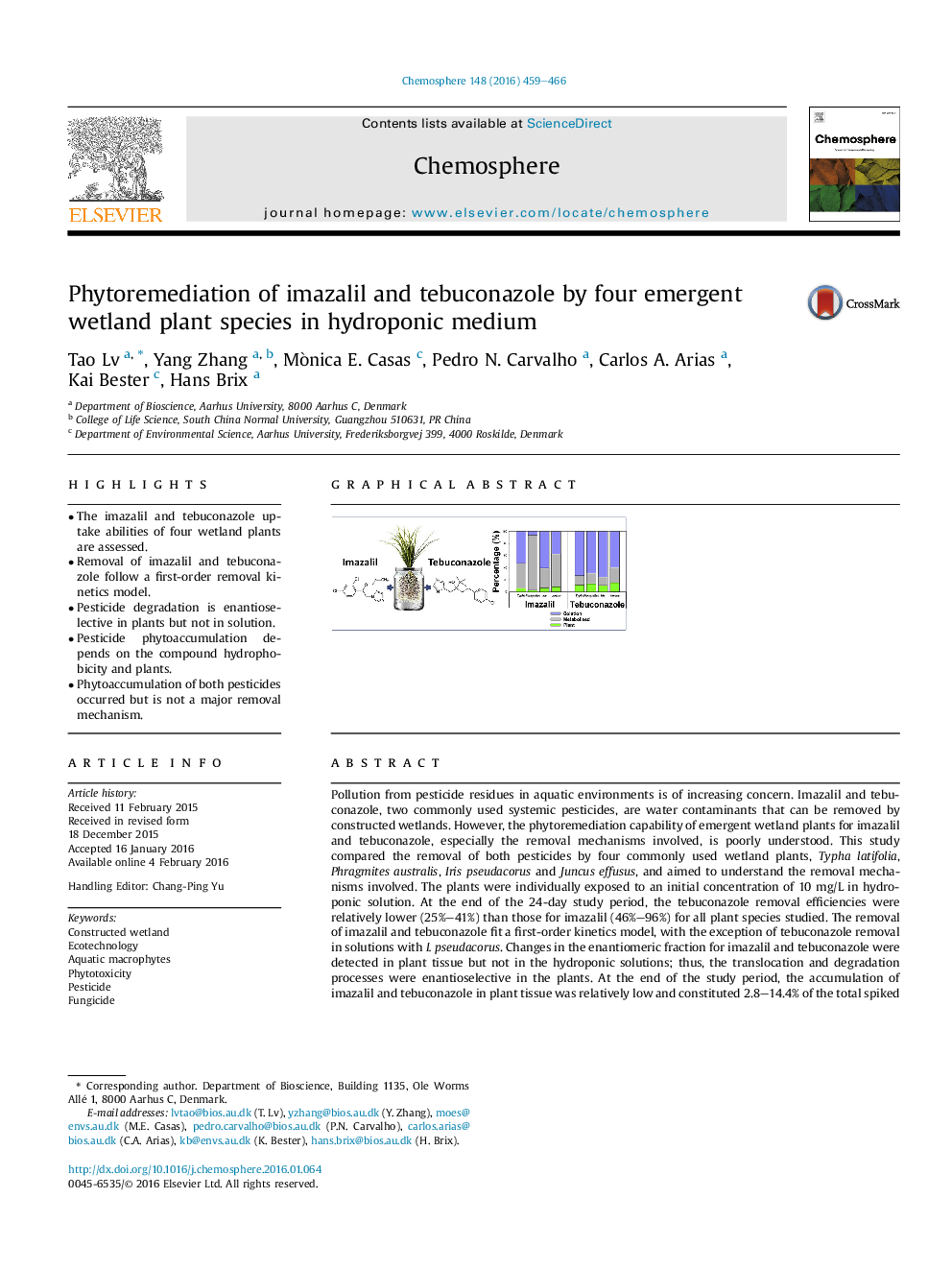| کد مقاله | کد نشریه | سال انتشار | مقاله انگلیسی | نسخه تمام متن |
|---|---|---|---|---|
| 4407866 | 1618823 | 2016 | 8 صفحه PDF | دانلود رایگان |
• The imazalil and tebuconazole uptake abilities of four wetland plants are assessed.
• Removal of imazalil and tebuconazole follow a first-order removal kinetics model.
• Pesticide degradation is enantioselective in plants but not in solution.
• Pesticide phytoaccumulation depends on the compound hydrophobicity and plants.
• Phytoaccumulation of both pesticides occurred but is not a major removal mechanism.
Pollution from pesticide residues in aquatic environments is of increasing concern. Imazalil and tebuconazole, two commonly used systemic pesticides, are water contaminants that can be removed by constructed wetlands. However, the phytoremediation capability of emergent wetland plants for imazalil and tebuconazole, especially the removal mechanisms involved, is poorly understood. This study compared the removal of both pesticides by four commonly used wetland plants, Typha latifolia, Phragmites australis, Iris pseudacorus and Juncus effusus, and aimed to understand the removal mechanisms involved. The plants were individually exposed to an initial concentration of 10 mg/L in hydroponic solution. At the end of the 24-day study period, the tebuconazole removal efficiencies were relatively lower (25%–41%) than those for imazalil (46%–96%) for all plant species studied. The removal of imazalil and tebuconazole fit a first-order kinetics model, with the exception of tebuconazole removal in solutions with I. pseudacorus. Changes in the enantiomeric fraction for imazalil and tebuconazole were detected in plant tissue but not in the hydroponic solutions; thus, the translocation and degradation processes were enantioselective in the plants. At the end of the study period, the accumulation of imazalil and tebuconazole in plant tissue was relatively low and constituted 2.8–14.4% of the total spiked pesticide in each vessel. Therefore, the studied plants were able to not only take up the pesticides but also metabolise them.
Figure optionsDownload as PowerPoint slide
Journal: Chemosphere - Volume 148, April 2016, Pages 459–466
